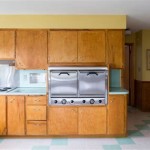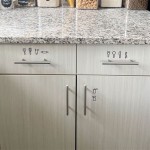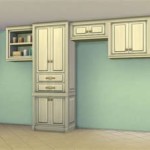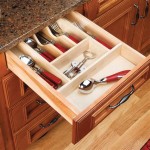Green Kitchen Cabinets With White Countertops: A Timeless and Versatile Design Choice
The combination of green kitchen cabinets with white countertops represents a design trend that balances natural aesthetics with a clean, modern feel. This pairing offers homeowners a versatile canvas for creating a kitchen that is both stylish and functional. The varying shades of green, coupled with the crispness of white, allow for a wide range of design interpretations, from rustic farmhouse to sleek contemporary.
The enduring popularity of this color scheme stems from its ability to evoke a sense of tranquility and connection to the outdoors. Green, often associated with nature, growth, and renewal, brings a calming influence into the heart of the home. White countertops, on the other hand, reflect light and create an open, airy atmosphere. Together, they form a harmonious balance that is both visually appealing and psychologically calming.
Selecting the right shades of green and white, as well as the appropriate materials and finishes, is crucial for achieving the desired aesthetic. Careful consideration must be given to the overall style of the home, the amount of natural light available, and the personal preferences of the homeowner. This article will explore key aspects of designing a kitchen with green cabinets and white countertops, providing insights into color palettes, material choices, and design considerations.
Understanding the Appeal of Green and White Combinations
The success of green kitchen cabinets with white countertops lies in the inherent contrast and complementary nature of the two colors. Green provides a grounding element, anchoring the space and adding a touch of organic warmth. White serves as a neutral backdrop, highlighting the green cabinetry and creating a sense of spaciousness. This interplay of color allows for a visually dynamic yet cohesive design.
The specific undertones of green significantly influence the overall feel of the kitchen. For example, a sage green evokes a sense of rustic charm and pairs well with natural wood accents and farmhouse-style fixtures. Forest green, with its deeper, richer hue, creates a more sophisticated and dramatic ambiance. Mint green offers a fresh and vibrant alternative, ideal for modern or retro-inspired kitchens. Similarly, the shade of white chosen for the countertops can range from a bright, stark white to a warmer, creamier tone, each impacting the overall aesthetic. A cooler white will enhance the crispness and modernity of the design, while a warmer white will create a more inviting and comfortable atmosphere.
Beyond their aesthetic appeal, green and white also have practical benefits. Green is known for its ability to mask dirt and imperfections better than lighter colors, making it a practical choice for kitchen cabinets that are prone to spills and splatters. White countertops, particularly those with a glossy finish, are easy to clean and maintain, helping to keep the kitchen looking pristine.
The popularity of this color combination also aligns with broader design trends that prioritize natural materials, sustainable living, and a connection to the outdoors. Green, in particular, has emerged as a prominent color in interior design, reflecting a growing desire for spaces that promote wellness and tranquility. When combined with white, it creates a kitchen that is both stylish and conducive to a healthy and balanced lifestyle.
Exploring Material Choices for Cabinets and Countertops
The selection of materials plays a crucial role in the durability, functionality, and overall aesthetic of a kitchen with green cabinets and white countertops. For cabinets, a variety of options are available, each with its own unique characteristics and price point.
Solid wood cabinets offer a timeless and luxurious appeal. They are durable, long-lasting, and can be painted or stained in a wide range of green hues. Popular wood choices include maple, oak, and cherry, each with distinct grain patterns and inherent warmth. However, solid wood cabinets tend to be more expensive than other options.
Plywood cabinets offer a more cost-effective alternative to solid wood while still providing a durable and stable base for painted finishes. High-quality plywood is less prone to warping and cracking than solid wood, making it a suitable choice for kitchens with varying humidity levels.
Medium-density fiberboard (MDF) is another popular choice for cabinet construction. MDF is a composite material made from wood fibers and resin. It is smooth, consistent, and provides an excellent surface for painting. However, MDF is not as resistant to moisture as solid wood or plywood, so it is important to ensure proper sealing and finishing to prevent water damage.
For countertops, there are also numerous options to consider, each offering different levels of durability, maintenance requirements, and aesthetic appeal.
Quartz countertops have become increasingly popular due to their durability, low maintenance, and wide range of color and pattern options. Quartz is a manufactured stone that combines natural quartz crystals with resin and pigments. It is non-porous, stain-resistant, and does not require sealing. White quartz countertops can mimic the look of natural marble or granite while offering superior performance.
Granite countertops offer a natural and luxurious look. Each slab of granite is unique, with its own distinctive veining and patterns. Granite is durable and heat-resistant, but it is porous and requires regular sealing to prevent staining. White granite options can range from solid white to those with subtle gray or beige veining.
Marble countertops are prized for their elegant and timeless beauty. Marble is a natural stone that is known for its soft veining and luxurious feel. However, marble is also relatively soft and porous, making it susceptible to scratches and stains. White marble countertops require regular sealing and careful maintenance.
Laminate countertops are a cost-effective option that offers a wide range of colors and patterns. Laminate is made from layers of paper and resin that are bonded to a particleboard core. It is relatively durable and easy to clean, but it is not as heat-resistant or scratch-resistant as other countertop materials. White laminate countertops can be a budget-friendly way to achieve a clean and modern look.
Design Considerations for Achieving a Cohesive Look
Creating a cohesive and visually appealing kitchen with green cabinets and white countertops requires careful consideration of various design elements, including hardware, backsplash, flooring, and lighting.
Hardware choices can significantly impact the overall style of the kitchen. Brass or gold hardware can add warmth and elegance to a traditional or transitional kitchen. Silver or chrome hardware can create a sleek and modern look. Black hardware offers a dramatic contrast and pairs well with both light and dark green cabinets. The style of the hardware should complement the overall design aesthetic, whether it is sleek and minimalist or ornate and decorative.
The backsplash serves as a visual bridge between the cabinets and countertops. White subway tile is a classic and versatile option that complements both green cabinets and white countertops. Other backsplash options include glass tile, mosaic tile, and natural stone tile. The color and texture of the backsplash should be chosen to enhance the overall design and create visual interest. A subtle pattern or texture can add depth and dimension to the space without overwhelming the eye.
Flooring choices should complement the color scheme and style of the kitchen. Hardwood flooring in a light or medium tone can add warmth and natural beauty to the space. Tile flooring, such as ceramic or porcelain, offers durability and water resistance. Vinyl flooring is a cost-effective option that is available in a wide range of colors and patterns. The flooring should be chosen to create a cohesive and functional space.
Lighting plays a crucial role in the overall ambiance of the kitchen. Natural light is ideal, but artificial lighting is also essential. Recessed lighting provides general illumination, while pendant lights above the island or peninsula add task lighting and visual interest. Under-cabinet lighting illuminates the countertops and makes food preparation easier. The lighting should be layered to create a well-lit and inviting space.
Finally, accessories and décor can be used to personalize the kitchen and add pops of color and personality. Plants, artwork, and decorative objects can be used to create a warm and inviting space. The accessories should be chosen to complement the color scheme and style of the kitchen.

Beautiful Kitchen Features Sage Green Cabinets Paired With White Quartz Countertops Inspirations Island

House Home Bored Of White Kitchens Discover The Cabinet Color We Love

House Home Bored Of White Kitchens Discover The Cabinet Color We Love

Kitchen Design Ideas Ultimate Planning Guide Countertops Green Cabinets Sage

House Home Bored Of White Kitchens Discover The Cabinet Color We Love

Kitchen Features Sage Green Island Honed With White Marble Waterfall Countertop And Ca

The Allure Of A Green Kitchen Make Mine Spritzer

Are All White Kitchens Over The Popular Color Trend That S On Rise

Eight Colorful Interiors Designed To Inspire Page 2 Of Cottage Journal Kitchen Interior Green Cabinets Home Decor

Soothing Green Kitchen Features Sage Cabinets Paired With White Quartz Countertops And Cabinet Design New
Related Posts








